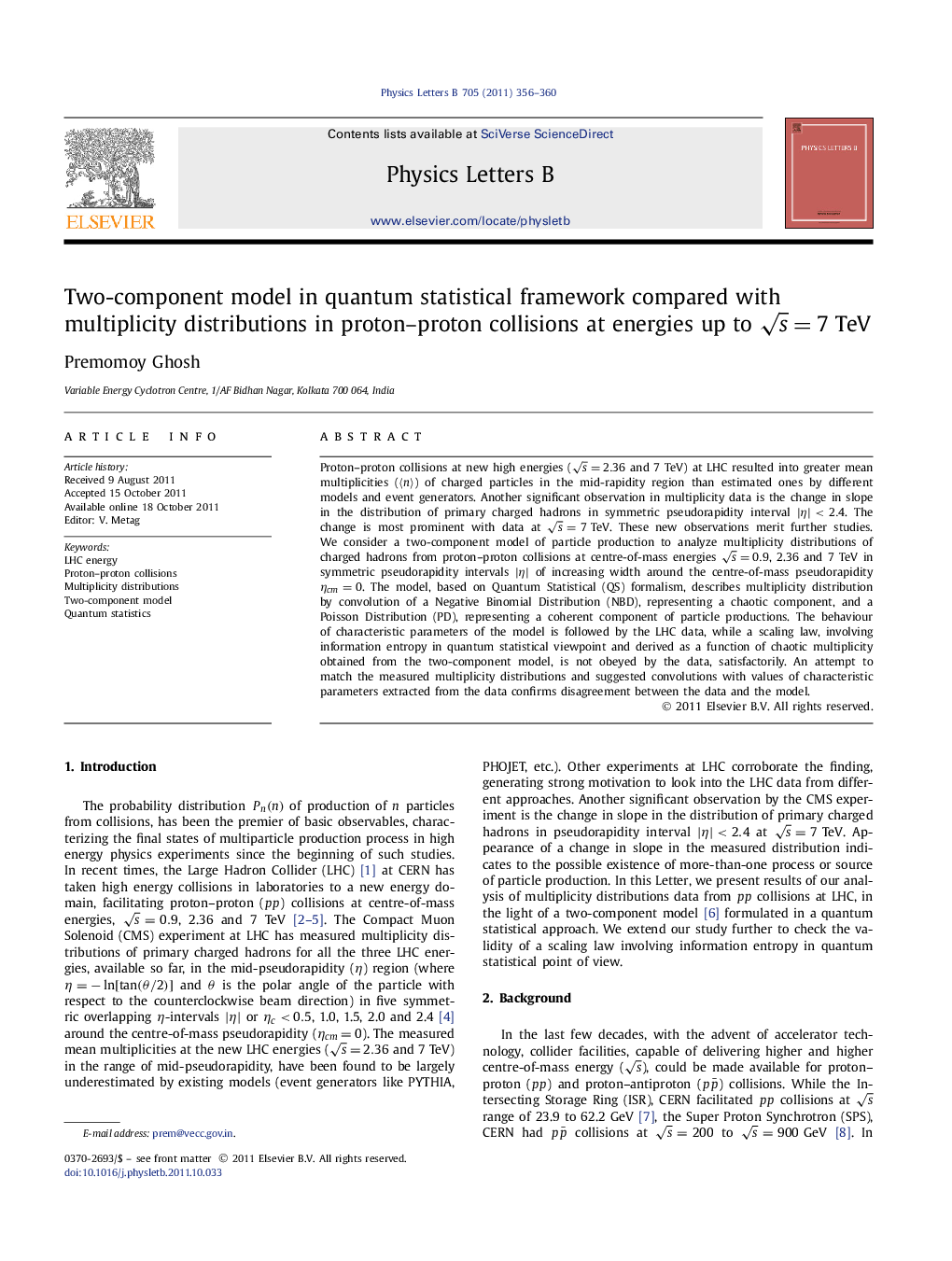| Article ID | Journal | Published Year | Pages | File Type |
|---|---|---|---|---|
| 10725085 | Physics Letters B | 2011 | 5 Pages |
Abstract
Proton-proton collisions at new high energies (s=2.36 and 7 TeV) at LHC resulted into greater mean multiplicities (ãnã) of charged particles in the mid-rapidity region than estimated ones by different models and event generators. Another significant observation in multiplicity data is the change in slope in the distribution of primary charged hadrons in symmetric pseudorapidity interval |η|<2.4. The change is most prominent with data at s=7 TeV. These new observations merit further studies. We consider a two-component model of particle production to analyze multiplicity distributions of charged hadrons from proton-proton collisions at centre-of-mass energies s=0.9, 2.36 and 7 TeV in symmetric pseudorapidity intervals |η| of increasing width around the centre-of-mass pseudorapidity ηcm=0. The model, based on Quantum Statistical (QS) formalism, describes multiplicity distribution by convolution of a Negative Binomial Distribution (NBD), representing a chaotic component, and a Poisson Distribution (PD), representing a coherent component of particle productions. The behaviour of characteristic parameters of the model is followed by the LHC data, while a scaling law, involving information entropy in quantum statistical viewpoint and derived as a function of chaotic multiplicity obtained from the two-component model, is not obeyed by the data, satisfactorily. An attempt to match the measured multiplicity distributions and suggested convolutions with values of characteristic parameters extracted from the data confirms disagreement between the data and the model.
Related Topics
Physical Sciences and Engineering
Physics and Astronomy
Nuclear and High Energy Physics
Authors
Premomoy Ghosh,
